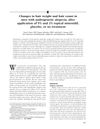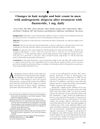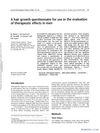Search
forLearn
5 / 65 resultslearn Thymosin Beta 4
learn Stem Cell Factor
learn Procyanidin
bioflavonoid found in plants with antioxidant and hair stimulating properties
learn Follistatin
glycoprotein that inhibits TGF-β and promotes hair growth by antagonizing activin
Research
5 / 1000+ results
research Changes in Hair Weight and Hair Count in Men with Androgenetic Alopecia After Application of 5% and 2% Topical Minoxidil, Placebo, or No Treatment
Minoxidil increases hair weight and count temporarily in men with hair loss.

research Changes in Hair Weight and Hair Count in Men with Androgenetic Alopecia After Treatment with Finasteride, 1 mg, Daily
Finasteride increases hair weight and count in men with hair loss.

research A Hair Growth Questionnaire for Use in the Evaluation of Therapeutic Effects in Men
The questionnaire effectively measures men's perceived hair growth and can distinguish between different treatments and dosages.

research Efficacy and Safety of 3% Minoxidil Versus Combined 3% Minoxidil / 0.1% Finasteride in Male Pattern Hair Loss: A Randomized, Double-Blind, Comparative Study
The combined treatment of 3% minoxidil and 0.1% finasteride is more effective in improving hair loss than 3% minoxidil alone, with similar side effects.

research Use of Botulinum Toxin for Androgenic Alopecia: A Systematic Review
Botulinum toxin injections can help treat common hair loss in men, but more research is needed to confirm this and understand how it works.
Community Join
5 / 1000+ resultscommunity Why are low finasteride doses seen as highly ineffective, when studies show 0.05 mg/day to work?
The efficacy of low doses of finasteride to reduce scalp DHT, and whether studies showing a 61% reduction are reflected in actual results. Replies discussed hair growth as an unintended consequence of minoxidil and finasteride use, as well as self-selective bias, potential side effects, and that studies measure effectiveness by hair count changes rather than DHT inhibition.
community Interesting article links major MPB theories to western diet (and life-style)
Poor diet and lifestyle contribute to male pattern baldness. Treatments like Minoxidil, dietary changes, and lifestyle adjustments may help slow hair loss.
community GT20029 - Stand-alone Saviour or just part of the stack?
The post discusses the potential of GT20029 in treating hair loss, questioning if it will replace finasteride or be used alongside existing treatments. A reply indicates that its role is still uncertain.
community Be careful when switching from Finasteride to Dutasteride because for more efficacy.
Switching from finasteride to dutasteride may be more effective for hair regrowth due to dutasteride's stronger enzyme inhibition, but combining both drugs could enhance results. Some users report better outcomes with dutasteride, while others recommend a gradual transition to prevent potential hair loss.
community With studies showing that 0.2mg Finasteride is almost as effective as 5mg at reducing DHT, why is every doctor prescribing 1mg?
Finasteride is prescribed at 1mg because it is FDA-approved and proven effective, despite evidence that 0.2mg may similarly reduce DHT. The 1mg dose is more effective for hair growth, and lower doses are less available.